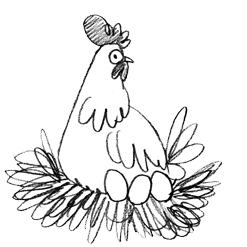
It happens every time. A fresh grassroots project kicks off, chaotic, joyful, full of promise. The code is rough, the conversations messy, but the energy is real. People come together not for money or prestige, but because something needs doing and no one else will do it.
Then, they arrive, the careerists, the chancers, the opportunists who talk a good game of “community” and “values” while quietly positioning themselves for influence, funding, reputation. You know these people, they start “facilitating” things, pushing for “professionalism,” organising pointless panels, and – without fail – introduce hierarchical management logic dressed in pseudo-horizontal language.
Soon, the messy collective space becomes an application form, organic conversations shift to curated “working groups”, governance becomes gatekeeping, code becomes control.
Careerism is a cultural virus, OK, these people aren’t evil villains, they’re simply products of their environment, trained to extract value, shape narratives, and build CVs. But their impact is destructive, even if unintentional. What they bring with them is the #mainstreaming mindset, a default toward #NGO logic, safe liberalism, risk-aversion, and the slow suffocation of wild experimentation.
They start to block with niceness., they silence with process, they smother with “inclusivity” until there’s no air left to breathe. When people question this, then they start to become nasty, trolling, blocking and finally ignoring runs its predictable course…
Examples? Let’s name some very formiler patterns:
The Self-Appointed Spokesperson – Shows up late, speaks the loudest, builds a personal brand on the back of others’ labour.
The Grant-Whisperer – Always chasing the next funder, reshaping the project to fit what’s "deliverable" instead of what’s needed.
The Gatekeeping Ally – Claims to represent the marginalised, while shutting down dissent and complexity with soft authoritarianism.
The #NGO Zombie – Thinks every grassroots space needs a board, a charter, and a code of conduct before it needs trust or purpose.
The Pivot Junkie – Tries to steer the project toward startup land “just to be sustainable,” and ends up reinventing capitalism in #FOSS clothes.These types thrive when horizontality lacks grounding. On the path we need to take, “cancel culture” is a cul-de-sac. Blocking them just makes them martyrs. Ignoring them lets them take over. The alternative? Compost them, let their bullshit rot in the open, call things what they are. Tech is political, values are not neutral. What to do? Compost, don’t cancel.
To reboot the #openweb and keep it rooted in the #4opens: Open Code, Open Data, Open Standards, Open Process. Rebooting needs resistance, we have to build spaces that are both porous and protected, we need, paths and spaces with membranes, not walls. Trust-based collectives with clear boundaries. If someone’s treating your community like a stepping stone, show them the compost bin. If someone’s building with care, humility, and rootedness, then share our tools with them.
This is not a purity test, it’s composting as culture, if something smells off, trust your nose. Because if we don’t get serious about this, the chancers will take over. They always do. Unless we make the path too muddy for them to walk it.

A core problem is that too many “open” tech projects try to model social relations after code workflows rather than shaping code to reflect healthy social processes. Ersatz writing, ersatz governance and the slow death of the #openweb. We’re living through a wave of fakery. The #AI hype machine spews endless streams of ersatz writing – grammatically perfect, stylistically smooth, and hollow. It feels like content but carries no lived experience, no rooted context, no risk. Unedited, it’s a shadow play of culture.
The same hollowness infects too many horizontal tech spaces. Here, we find ersatz governance – systems that borrow the forms of openness and collaboration, but replace the substance with tech bureaucracy. Instead of starting from lived social practice, they mimic software workflows: people reduced to issue tickets, trust replaced by “process,” culture swapped for sprint planning. The result is the same as with AI: the outputs are technically competent but socially dead.
When governance is reduced to process, the door swings open for the chancers, the careerists, and the #NGO climbers. They’re fluent in the language of inclusivity and consensus, but they’re not here to build, these people thrive in systems where nothing is anchored in lived trust or collective history. In such environments, appearances are reality, and they control the appearance.
The mirror needs to flip, healthy social production can inspire healthy code production, but trying to run human interaction like a Git repo produces brittle, alienating cultures. We see it in the #Fediverse right now: meetings full of procedure but no warmth; #PRs merged while communities fracture; polished governance documents for projects this pointlessness.
The #openweb was never meant to be safe for professional managers of openness. It was meant to be a living commons, messy, unpredictable, full of disagreements and breakthroughs. If we can root our governance in actual relationships rather than corporate abstractions, we can build tech that reflects community rather than forcing community to reflect tech. Otherwise, we’ll just have two hollow empires – AI’s Ersatz Writing on one side, and our own Ersatz Governance on the other – both looking open, both feeling dead.







